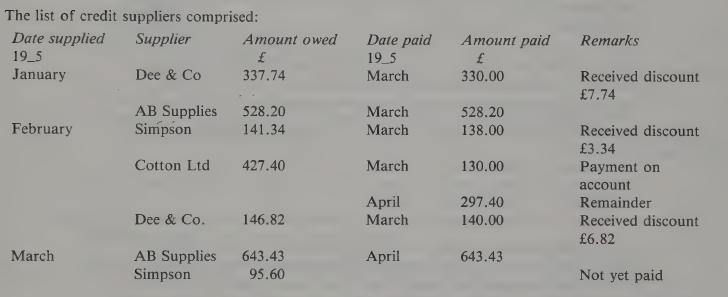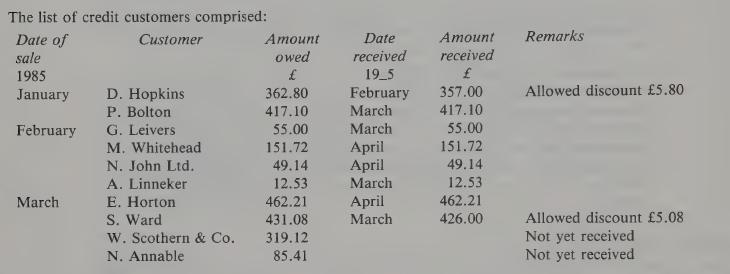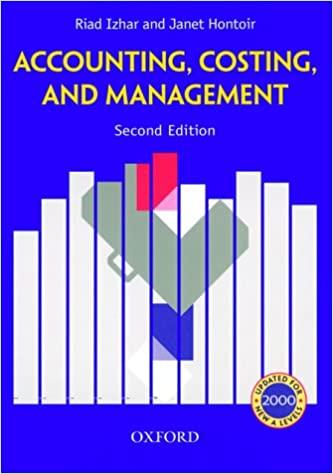After completing a training course at a technical college, Michael Faraday set up in business as a
Question:
After completing a training course at a technical college, Michael Faraday set up in business as a self-employed electrician on 1 January 19_5. He was very competent at his job but had no idea how to maintain proper accounting records. Sometime during 19_5 one of his friends asked Michael how well his business was doing. He replied ‘All right...I think...but I’m not quite sure’.
In the ensuing conversation his friend asked whether he had prepared accounts yet, covering his first quarter’s trading, to which Michael replied that he had not. His friend then stressed that, for various reasons, it was vital for accounts of businesses to be prepared properly.
Shortly afterwards Michael came to see you to ask for your help in preparing accounts for his first quarter’s trading. He brought with him, in a cardboard box, the only records he had, mainly scribbled on scraps of paper.
He explained that he started his business with a car worth £700, and £2 250 in cash of which £250 was his savings and £2 000 had been borrowed from a relative at an interest rate of 10% per annum. It was his practice to pay his suppliers and expenses in cash, to require his customers to settle their accounts in cash and to bank any surplus in a business bank account. He maintained lists of cash receipts and cash payments, of supplies obtained on credit and of work carried out for customers and of appliances sold, on credit.

The purchase in January from Dee & Co. was of tools and equipment to enable him to carry out electrical repair work. All the remaining purchases were of repair materials, except for the purchase in February from Cotton Ltd. which consisted entirely of electrical appliances for resale.
In addition to the above credit transactions, he had brought repair materials for cash, as follows:



He had also withdrawn £160.00 in cash at the end of each month for living expenses.

The above amounts relate to charges for repair work which he had carried out, except that the amounts shown in February for G. Leivers, N. John Ltd. and A. Linneker are for sales of electrical appliances.
In addition to the above credit transactions, he had cash takings, as follows:

He estimated that, at the end of March 19_5, his stock of electrical repair materials was £691.02 and of electrical appliances for resale was £320.58, his tools and equipment were worth £300.00 and his car, £600.00. Apart from loan interest, the only accrual was for heating and lighting £265.00.
Required:
(a) Prepare (i) purchase daybook with analysis columns for type of purchase, and (ii) sales daybook with analysis columns for class of business undertaken.
(b) Open, post to 31 March 19_S only, and balance a columnar cash book suitably analysed to facilitate ledger postings.
(c) Open, post to 31 March 19_5 only, and balance a creditors ledger control account and a debtors ledger control account. Use the closing balances in your answer to (g) below. [NB. Individual accounts for creditors and debtors are NOT required].
(d) Open, post and balance sales and cost of sales accounts, each with separate columns for ‘Repairs’ and ‘Appliances’.
(e) Prepare M. Faraday’s trading account for the quarter ended 31 March 19_5, distinguishing between gross profit on repairs and on appliance sales.
(f) Prepare M. Faraday’s general profit and loss account for the quarter ended 31 March 19_5.
Step by Step Answer:

Accounting Costing And Management
ISBN: 9780198328230
2nd Edition
Authors: Riad Izhar, Janet Hontoir





